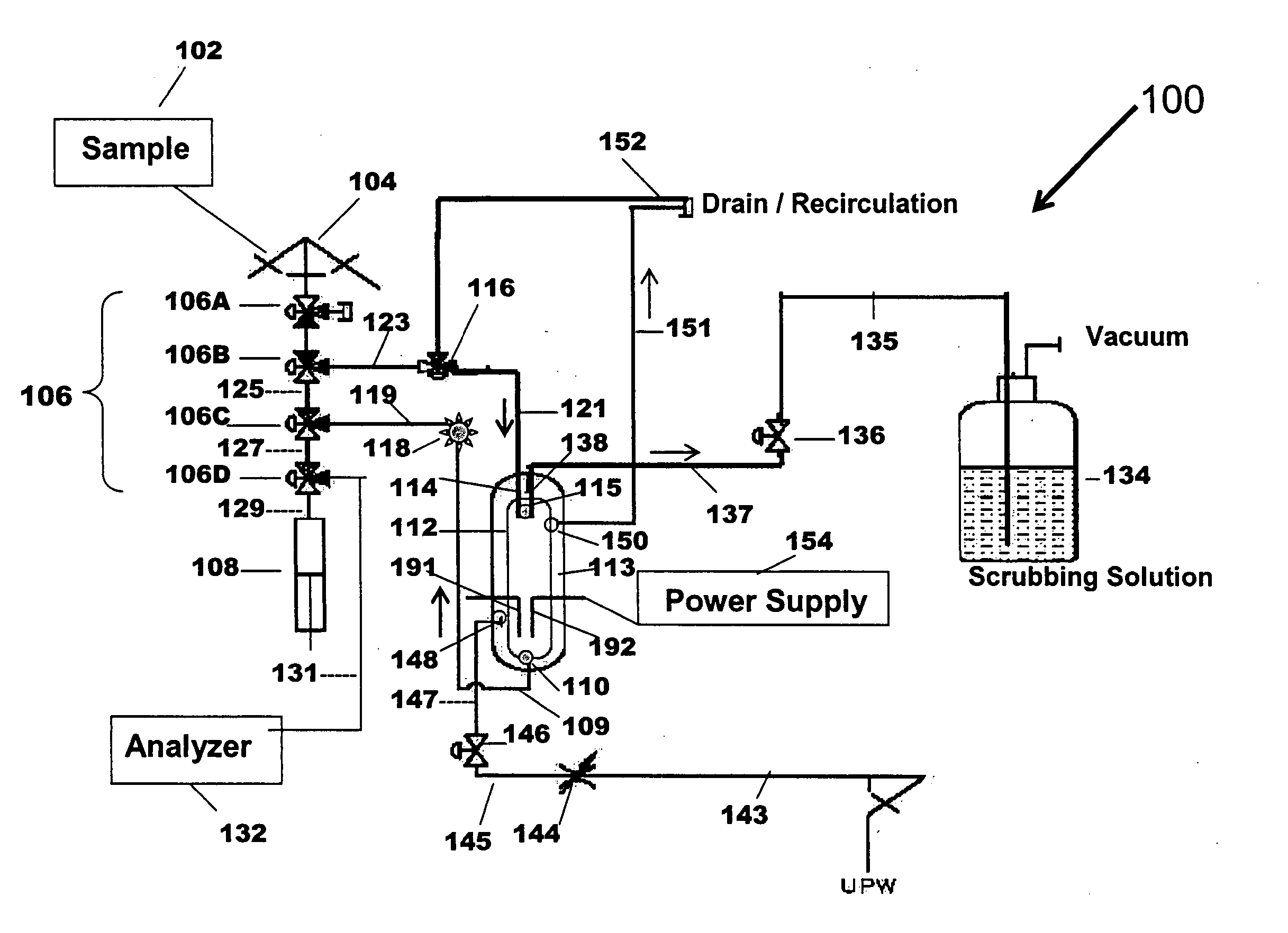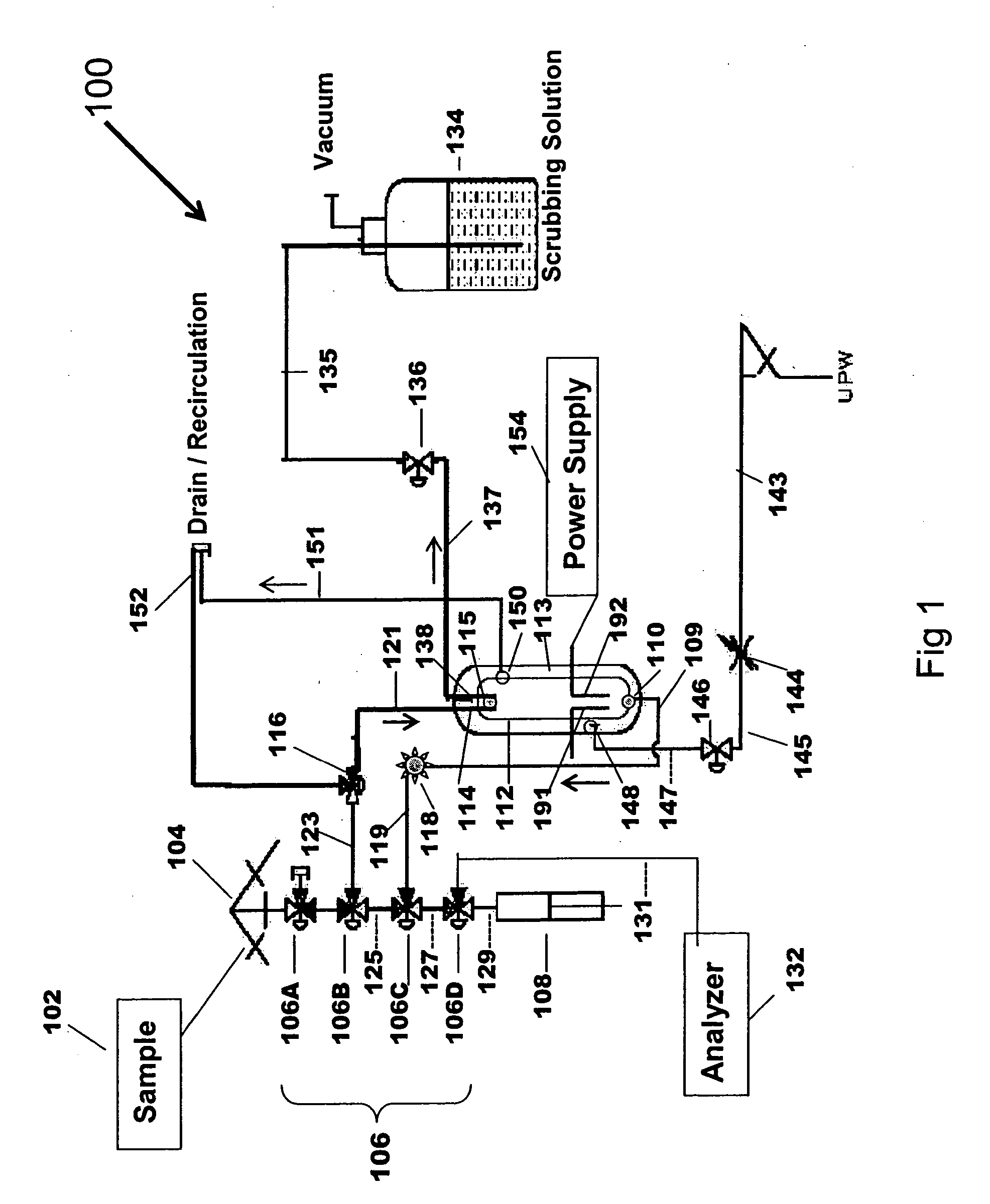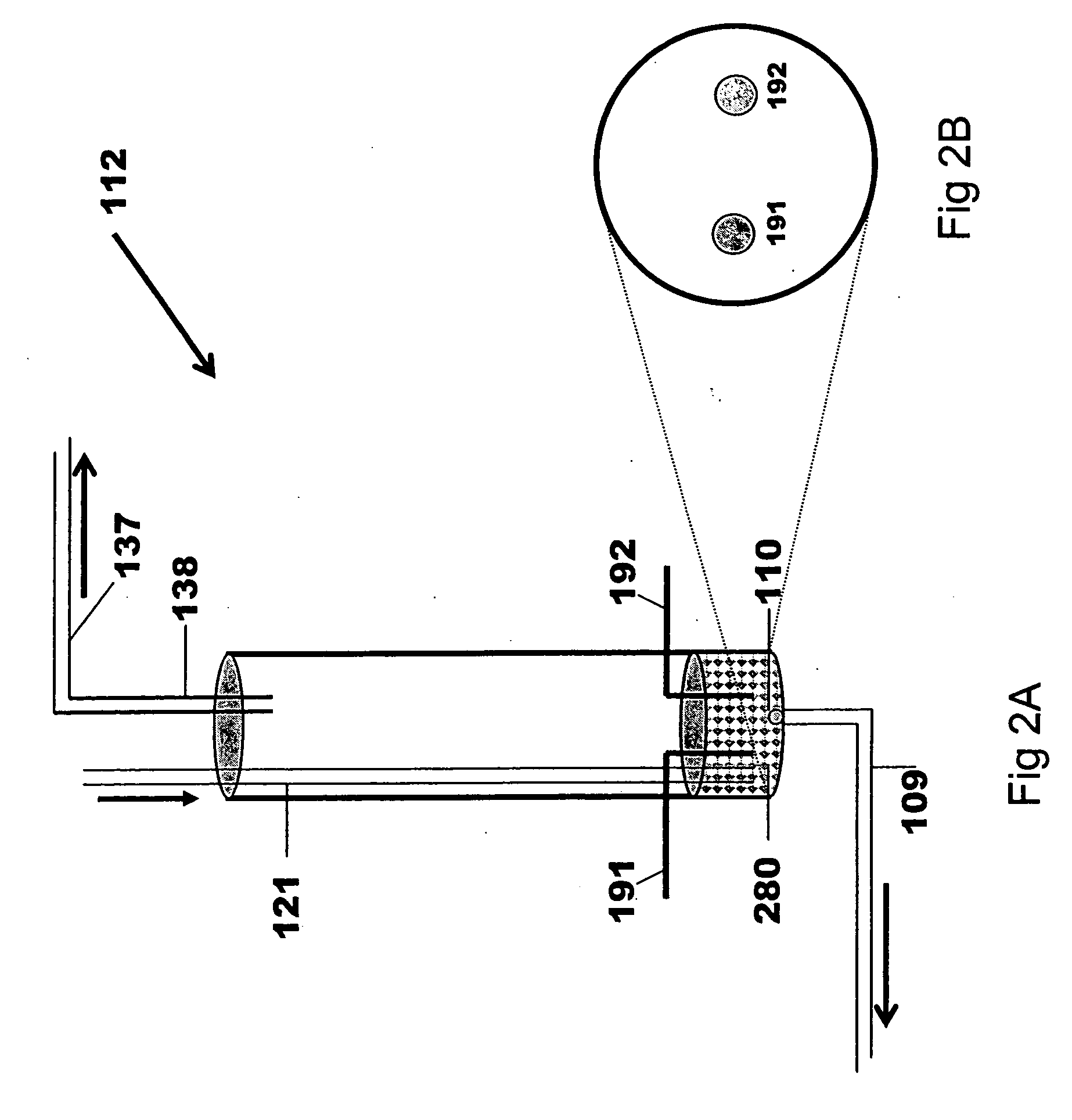Electrolytic method and apparatus for trace metal analysis
a trace metal and electrolytic technology, applied in the field of analytical solutions, can solve the problems of cleaning solution at a parts-per-trillion, inability to distinguish the desired analyte signal, and inability to analyze samples accurately, etc., to achieve efficient and highly accurate analysis, enhance analysis
- Summary
- Abstract
- Description
- Claims
- Application Information
AI Technical Summary
Benefits of technology
Problems solved by technology
Method used
Image
Examples
example 1
[0079] 30 milliliters of SC2 solution (HCl:H2O2:H2O at ratio 1:1:6) was spiked with a known amount of metals in the range of 1-5 part per billion (ppb). The solution was divided into three equal parts. Five equal samples from each part (i.e., 2 milliliters of spiked SC2 solution) were separately electrolyzed under similar conditions in an electrolytic apparatus having two rod-shaped electrodes. The total surface area of each electrode was 0.225 cm2, and the current at the start of electrolysis was 1.5 amperes at 6 volts.
[0080] For the first set of samples, no polarity was reversed during 30 minutes of electrolysis. The second set of samples was electrolyzed with only a first stage of voltage application including electrolysis duration for a time interval of 30 seconds and 1 second delay between polarity reversal for 15 cycles, one cycle occurring after both a positive and a negative charge (or a negative and a positive charge) have been applied to an electrode. The third set of sam...
example 2
[0082] In another example, fresh 30 milliliter of SC2 solution (HCl:H2O2:H2O ratio 1:1:6) was spiked with a known amount of metals in the range of 1-5 part per billion (ppb). The solution was divided into three equal parts. Five equal samples from each part (i.e., 2 milliliter of spiked SC2 solution) were separately electrolyzed under similar conditions in the same electrolytic cell as in Example 1. The three sets of samples were electrolyzed with first and second stages of voltage application including electrolysis duration of 30 seconds and a 1 second delay between polarity reversal for 15 cycles during the first stage. For the first set of samples, during the second stage when metal recovery occurs, electrolysis duration was about M second with a 1 second delay between polarity reversal for 5 cycles. The second set of samples was electrolyzed with a second stage of voltage application including electrolysis duration of 1 second with a 1 second delay between polarity reversal for ...
PUM
| Property | Measurement | Unit |
|---|---|---|
| time | aaaaa | aaaaa |
| time delay | aaaaa | aaaaa |
| time | aaaaa | aaaaa |
Abstract
Description
Claims
Application Information
 Login to View More
Login to View More - R&D
- Intellectual Property
- Life Sciences
- Materials
- Tech Scout
- Unparalleled Data Quality
- Higher Quality Content
- 60% Fewer Hallucinations
Browse by: Latest US Patents, China's latest patents, Technical Efficacy Thesaurus, Application Domain, Technology Topic, Popular Technical Reports.
© 2025 PatSnap. All rights reserved.Legal|Privacy policy|Modern Slavery Act Transparency Statement|Sitemap|About US| Contact US: help@patsnap.com



